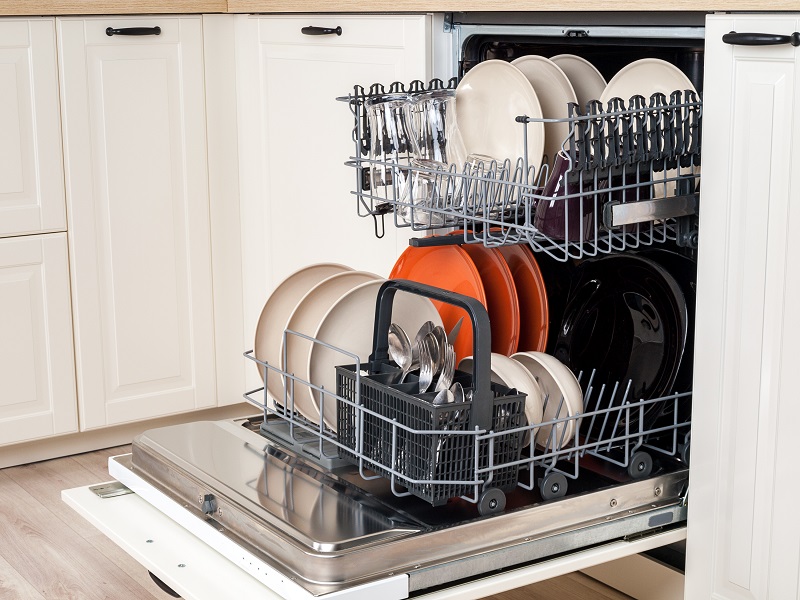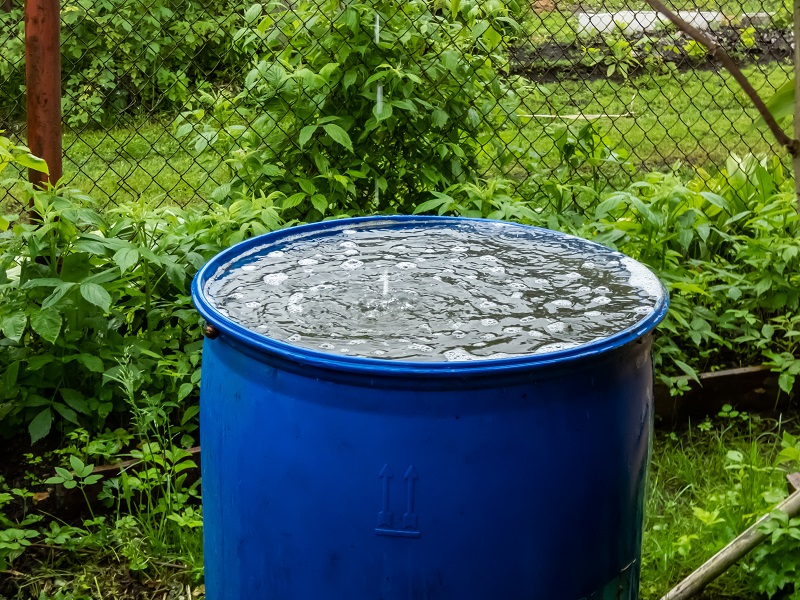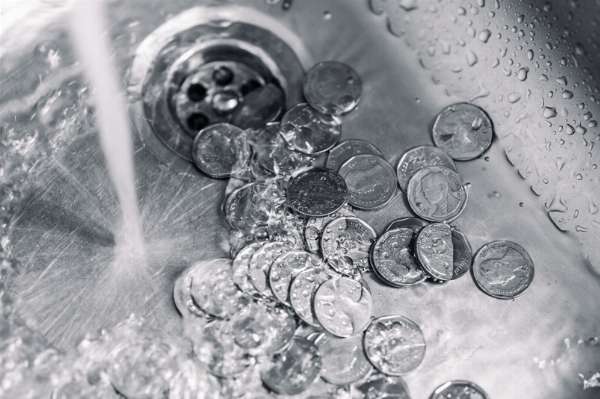Water is the most precious resource we have. We cook and clean with it, and we consume it, the latter of which is vital to our survival. But as critical as it is, water is not a free resource. On average, Americans spend roughly $47 per month on their water bill. Water isn’t something we can cut from our daily lives in order to save money, but there are still ways to limit your water usage, which will help lower your water bill. Try the methods below to save money instead of draining it from your wallet.
Take Shorter Showers (and Skip Baths)
This one should seem obvious, but it’s easy to lose track of time while showering. Showerheads use upward of 2.5 gallons per minute, which is about 40 gallons per day for the average household. A shorter shower — typically around three to five minutes — is more than enough to get the body clean. Another option is to alternate the days you shower. Depending on your lifestyle, you may not need to shower every day. That’s ultimately up to personal preference.
Baths can have therapeutic qualities and they’re a nice way to unwind after a stressful day, but the amount of water needed to fill the average bathtub far exceeds the amount needed for a shower. If you regularly take baths instead of showers, consider switching. It’s still fine to indulge on occasion.
Turn Off the Faucet When Brushing Your Teeth
Let’s face it: We’re all guilty of leaving the faucet running sometimes — especially when brushing our teeth. We’ll be rinsing the brush soon anyway, so how much water could we really use? More than you’d think. It doesn’t use much water each individual time, but it builds up to a major stressor on the water bill. Taking a few extra seconds to turn off the faucet will save big bucks in the long run. The same goes for flossing, shaving, and even washing your hands. You don’t need the water on while you’re soaping up.
Keep Water in the Fridge
Nobody likes drinking lukewarm water. It’s easy to reach for the tap to fill up your glass or bottle, but doing that for each individual glass will put a strain on your water bill. For ice-cold water instantly, invest in a pitcher for the refrigerator instead. Fill it up with tap water and leave it in the fridge for a few hours. Having to refill the pitcher rather than individual bottles will cut back on household water consumption — but not your own!
You may be thinking: Why don’t I just drink from water bottles then? That may seem like a simple solution, but the cost of the bottles will add up and quickly surpass what you may have saved by switching. Pitchers and reusable water bottles may be more expensive initially, but they save money (and the planet) in the long run.
Money Saver Alert: Swapping water companies saves the bill. A select few exist, but most residents won’t have the option of a private water provider. This is in part thanks to the Safe Drinking Water Act of 1974. A deregulated market may be good for some industries, but when it comes to clean water, it’s probably best that it remains heavily regulated. |
Upgrade Appliances and Fixtures
Modern washing machines, dishwashers, toilets, and even sinks are more energy- and water-efficient than their older counterparts. Shopping around for upgrades can make sense, even for relatively well-maintained appliances and fixtures. Look for products that advertise their ability to save you money on your water bill, and you just might find that spending a little cash on an upgrade can prove kinder on your wallet in the long term.
Create Your Own Low-Flow Toilet
Low-flush toilets and other such appliances are amazing. They offer the same capabilities as their more standard counterparts, but at a fraction of the water usage. Unfortunately, they can be more expensive. Not every household can afford to replace all their appliances, even if it’s to save money in the end. But what if you could turn your existing toilet into a low-flush one for cheap?
All you need is a small, waterproof object — preferably one that’s somewhat heavy. A brick is a popular choice, but some people use a plastic bottle filled with water. Empty the toilet’s tank and place the object at the bottom, away from anything it could get caught in. Allow the tank to refill. The object will displace the water and less will fill the tank. Presto — an instant low-flow tank!
The reason low-flush toilets are so desirable is that a typical toilet empties its whole tank when flushed. Say you take four bathroom breaks per day and your toilet’s tank holds 10 gallons; that’s 40 gallons of perfectly good water, literally flushed away.
Only Run Your Dishwasher and Washing Machine When They’re Full

Another obvious one we’re all guilty of is using the dishwasher or washing machine nowhere near its full capacity. Sometimes we need a specific shirt or dish cleaned, so we run the appliance without filling it up. But using so much water on a select few items is a major waste. Whenever possible, fill the washing machine or dishwasher to capacity — but it’s important not to overfill! Loading up too much will prevent the clothes or dishes from getting clean. You’ll have to run the appliance again, ultimately wasting even more water.
Consider Alternatives to Your Grass Lawn
A well-kept green lawn seems like the American dream, but it’s far from ideal. Lawns are considered “biologically dead” and aren’t healthy in many environments. Americans also use a collective 8 billion gallons of water to keep them pristine. Reinvent your lawn by planting drought-resistant, native grasses, shrubs, and trees. Not only will this save on water (since you won’t have to tend to them as frequently), but you’ll also be promoting healthy biodiversity in your community. Plus you’ll have a unique landscape compared to your neighbors!
Invest in Maintenance and Repairs
No appliance or pipe lasts forever, but replacing them can be costly and time-consuming. Something equally costly? Letting them leak. If you find a leak, patch it up to the best of your ability. Leaks not only waste water (and thus money), but they also decrease water pressure and flow. That results in additional time spent with the faucet running to get things cleaned or filled properly. Even a bit of duct tape can work as a temporary solution, but call a local expert immediately if you discover a major leak.
When you spot a leak, call a plumber. When you think something is wrong with an appliance, call the repair technician. Make sure that you’re on top of routine maintenance in between these emergency visits. Doing all of this can make a real difference in your water usage!
Invest in a Rain Barrel

This one admittedly is climate-dependent, but a rain barrel may be a worthwhile purchase if you live somewhere with frequent rain. Rainwater may not be drinkable, but it’s usable for other tasks. Watering plants is the obvious one, but it’s also perfect for washing cars. Just mix it with a bit of soap. It’s cheaper and just as effective as any professional car wash.
It’s possible to drink water from a rain barrel, but it will need to be sterilized first, which is typically accomplished by boiling it. Rainwater is commonly contaminated with parasites, viruses, and other nasty things, though, so leave it for the plants and automobiles if you have access to clean drinking water from the tap.
Monitor Your Water Usage and Educate Your Household
Keeping a close eye on your water usage and educating everyone in your household about the importance of water conservation are critical steps in reducing your water bill. Knowledge truly is half the battle when it comes to saving water. By understanding how much water you typically use and identifying any patterns or spikes in consumption, you can pinpoint areas where you can cut back.
Start by reviewing your monthly water bills to track your household’s water usage. Most utilities provide detailed statements that break down your daily or hourly usage, which can help you identify times of higher consumption. Share this information with your family or housemates, and set collective goals for reducing water use. Discuss simple changes everyone can make, such as turning off the tap while brushing teeth, fixing leaks promptly, and only running the washing machine and dishwasher with full loads. Educating your household not only raises awareness but also fosters a shared responsibility, making it more likely that everyone will commit to water-saving strategies.



